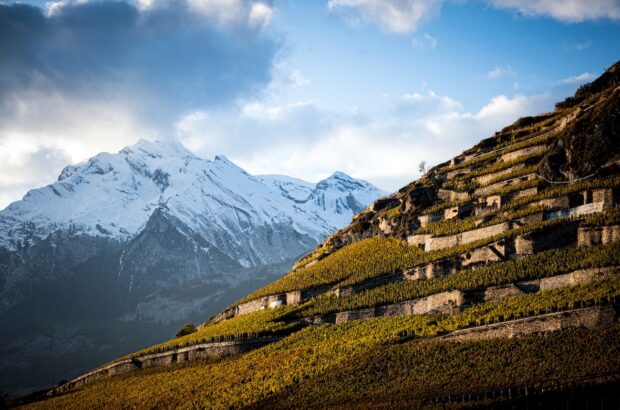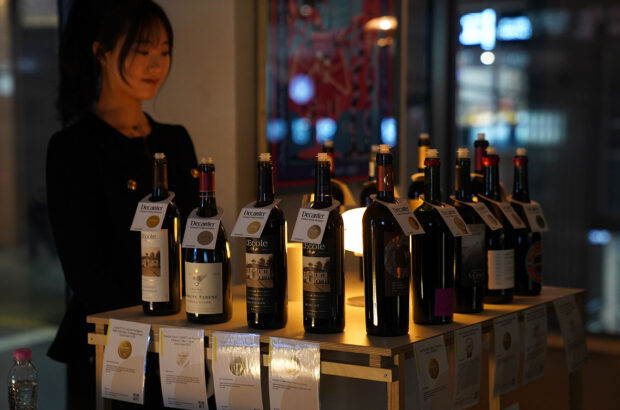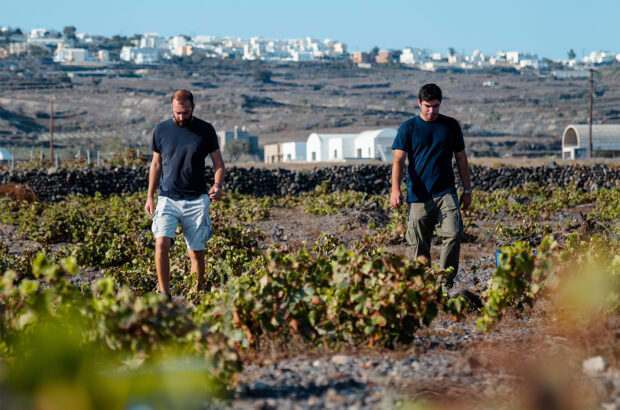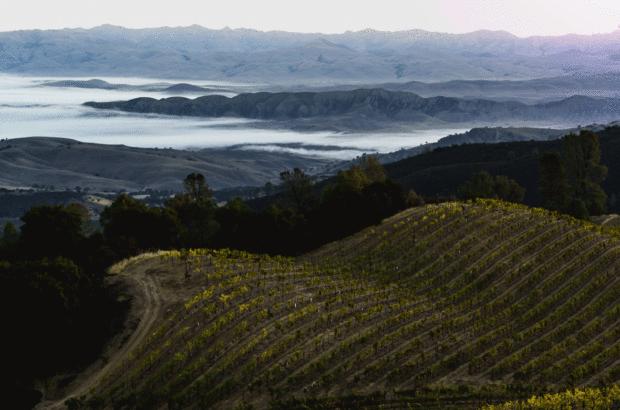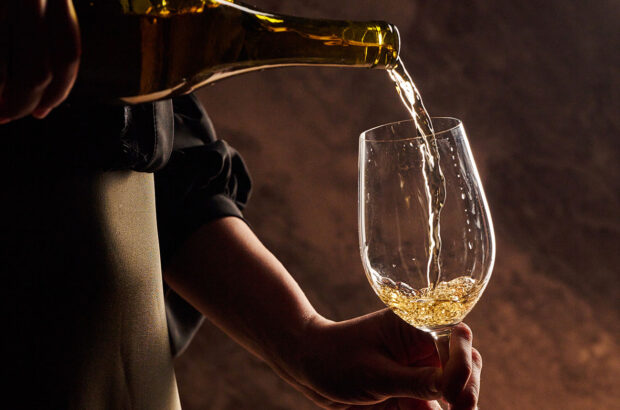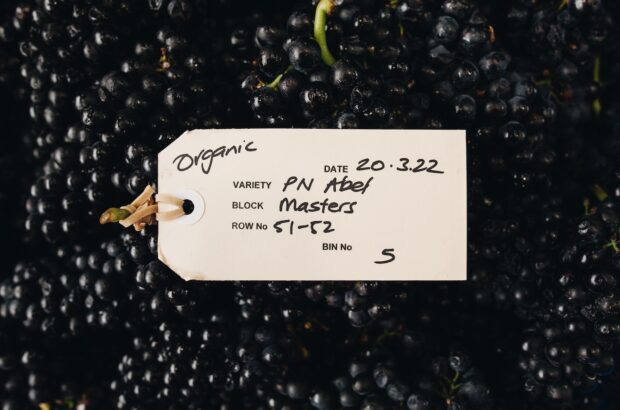As climate change intensifies, its impact on vineyards around the world is doing the same. High temperatures are altering the timing of events such as bud burst and grape maturity, while also having an impact on grape chemistry. Changing weather patterns are affecting water availability and the frequency of devastating hailstorms.
Meanwhile, the effect on vineyard ecosystems is also becoming increasingly evident, as rising temperatures and increasingly frequent extreme weather events are causing species of bird, insect and mammal to move in unpredictable and unprecedented ways.
Worldwide, wine-growers are noticing shifts in the wildlife that inhabits or visits their vineyards. Creatures that once kept their distance or followed predictable migration patterns are now showing up at unusual times or in greater numbers, often with costly consequences. Insect pests in particular are both becoming more abundant and increasing their ranges, and some of them are intensifying the disease pressure on the vines.
And while the impact is mostly felt in the vineyard, the viticultural shifts can become oenological ones, as winemakers contend with compromises to vine health and harvest quality and timing, which can shape the structure, balance and expression of the wines we drink. As yields fluctuate and pests force earlier or later harvests, the wines we know and love may vary in acidity, sugar levels or aromatic profiles as growers and winemakers adjust to new realities.
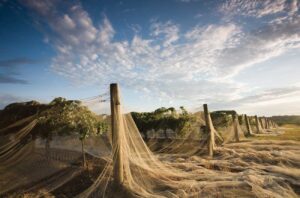
Vines draped in bird netting in Margaret River, Western Australia. Credit: Tap10 / Getty Images
Insects: prolific and potentially pungent
With global temperatures rising, it’s a bug’s life as the populations of insects once kept in check by cold winters and frosts swell and the creatures move into new regions. Warmer temperatures can also lead to insects reproducing more frequently, further swelling populations, or simply becoming more active. Escalating numbers of pest species will inevitably lead to increased damage to vines and grapes.
One such problematic species is the spotted wing drosophila, a type of fruit fly that causes damage to grapes both before and during harvest; left unchecked, it can cause the loss of the entire crop. Undocumented outside Japan prior to the 1930s, its geographic range has increased rapidly over the past 35 years and it can now be found on every continent except Antarctica. It was first reported in the UK in 2012, and is becoming an increasing problem here, with half of the vineyards that responded to WineGB’s 2023 harvest survey saying that they were affected.
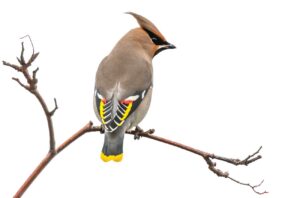
The cedar waxwing is known for its fondness for fruit, including grapes. Credit: Hannurama / Getty Images
In the US, of particular concern is the proliferation of the glassy-winged sharpshooter, a large leafhopper that feeds on the tissues of various plants, including grape vines. Its impact has been especially notable in California, where unusually warm winters have led to population surges in regions such as the southern San Joaquin Valley. The insects themselves do relatively little damage to the vines, but they are an important vector of Pierce’s disease, a bacterial vine malady that blocks the plant’s water-transporting xylem.
Historically, harsh winters helped suppress the disease; however, as winters have become milder, the bacteria and their insect carriers survive into spring, transforming what was once a sporadic threat into a chronic issue. For winemakers, the long-term consequences can be severe: infected vines often need to be uprooted and replaced.
Another growing problem is the brown marmorated stink bug, an invasive pest originally from East Asia that has now established itself in many wine-growing regions across the US and Europe, including the UK. Modelling research published in the British Journal of Entomology and Natural History suggests that global warming could see the pest become established in the southeast and east of England.
Unlike pests that damage vines directly, the stink bug poses a more insidious threat: it hides among grape clusters and, if crushed during vinification, releases foul-smelling compounds that can taint a wine’s aroma and flavour, even in minuscule concentrations.
Marauding mammals
Vineyards are also grappling with an influx of larger wildlife as changes to the climate drive animals beyond their traditional habitats and into the vines. In the Chianti Classico region in Tuscany, for example, wild boar and deer, which have long lived quietly in the surrounding landscapes, are venturing into vineyards more frequently and boldly. According to the region’s representative body, during particularly dry years, such as 2017 and 2021, some Chianti producers have lost up to 30% of their grape crop to foraging wildlife.
In response, some producers are implementing protective measures to mitigate the damage. ‘We have seen wildlife increasingly accessing vineyard areas in search of food. We have installed fences to protect the vineyards from roe deer in the hilly region of Prosecco and from wild boar in Chianti and Montalcino,’ says Sandro Bottega, managing director and owner of Bottega SpA, which makes wines from across Veneto and Tuscany.
Avian antagonists
Birds have long been a significant vineyard pest in many regions around the world. In one study carried out in Orange in New South Wales, Australia, birds rendered entire blocks unharvestable, consuming as much as 83% of the grape crop. As long ago as 2012, the estimated annual cost of bird damage to wine grapes across five US states, including Oregon and California, was US$70 million.
Today, rising global temperatures are disrupting the migration patterns of many bird species, and vineyards are feeling the effects. Seasonal shifts, specifically milder winters, are causing birds such as starlings, which are gluttons when it comes to grapes, to migrate later or travel shorter distances. In some cases, this has led to more birds remaining in wine regions during the crucial ripening and harvest periods.
Jason Lett of Eyrie Vineyards in Oregon’s Willamette Valley has observed this firsthand. ‘I’ve noticed a pattern in past years regarding bird migrations,’ he explains. ‘When early-season storms originating in Japan arc down through the Aleutian islands, the birds arrive just in time for harvest.’
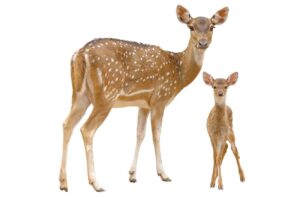
Deer eat both grapes and grape vines, particularly when vines are young and the fruit is ripe. Credit: Anankkml / Getty Images
As well as reducing yields, increased pressure from both birds and mammals can potentially shorten the optimal harvest window by forcing wine-growers to pick earlier, before the crop is all eaten, which will affect the style and balance of the final wine.
The problem has forced producers to get creative. Stephy Terrizzi of Giornata winery in Paso Robles, California, once relied on netting to safeguard her vines, but has embraced a more dynamic, natural solution: falconry. ‘The cost of buying, installing and eventually removing bird netting can exceed the expense of hiring a falconer,’ she explains. Compounding the issue, most netting is non-recyclable and, as Terrizzi notes, typically ‘ends up in landfill after just five to seven years’.
The effect of introducing birds of prey to vineyards can be significant. A study carried out in New Zealand found that bringing in falcons resulted in a 95% reduction in the number of grapes removed relative to vineyards without falcons.
Bats: Nature’s insecticide

A bat box at Esporão in Alentejo, Portugal. Credit: Esporao
But the news isn’t all bad. Rising temperatures have enabled a number of bat species to expand their ranges. In one study published in 2016, rising temperatures were identified as the primary factor in a 394% range expansion of Kuhl’s pipistrelle between 1980 and 2013.
In some regions, growing bat populations have emerged as unexpected allies for wine-growers. Insectivorous bats can consume as much as two-thirds of their body weight each night, equating to as many as 1,000 insects per hour, and hence offer a natural vineyard pest-control solution.
In Portugal’s Alentejo region, producer Esporão has seen ‘a noticeable increase in the activity of nocturnal insectivores, including bats, over the past decade,’ says Rui Falcão, the domaine’s communication and PR manager. By encouraging the bats’ presence, through habitat conservation and the installation of bat boxes, Esporão has seen a decreased presence of pests in blocks with stronger bat presence. ‘With growing pest pressures due to warmer winters and longer vegetative cycles, bats have become invaluable allies in our integrated pest management,’ says Falcão.
As vineyards and wine-growers struggle to cope with the changes wrought by climate-induced ecological flux, natural pest control solutions such as encouraging the presence of bats and birds of prey offer a potential way forward that works with nature, rather than against it.





